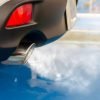You can contact us 24/7 +86 136 8660 5188
What to Look for When Buying a Second-Hand Engine

Buying a second-hand car engine is more like an alternative to getting a brand-new engine because of the cost of getting a new one. However, this is not something you should do with half or no information at all because, if you do, you might end up spending the money you really did not have to spend in the first place.
That is why we have put together in this blog post important things that you need to consider when you need to buy a second-hand engine for your car.
What to Look for When Buying a Second-Hand Engine
1. Buy Only from a Trusted Source
One very key thing when buying a second-hand car engine or any car part is to buy from someone who has been tested and trusted either by social proof or word of mouth.
2. Engine Compatibility
The second thing to look out for when buying a second-hand engine is ensuring that it is compatible with your car.
To do this,
Check the Engine Code: Every engine has a specific code (e.g., 4G63 or K20A). Find your car’s engine code in the owner’s manual, under the hood, or online, and ensure the replacement engine matches.
Check the Model and Year: Verify that the engine comes from a vehicle with the same make, model, and year as yours. Even slight differences in year models can result in compatibility issues.
As much as you can do this yourself if you get to a point and are unsure how to get the above information, ask your mechanic or the dealer.
3. Engine’s Mileage
The engine mileage will tell you what life span the engine has used and what is left in it.
This is important because lower mileage generally means less wear and tear. Engines with less than 100,000 miles are often a safer choice.
While at it, ask the seller for documents or details about the donor vehicle, such as maintenance history, odometer readings, or vehicle registration.
Sellers should have this information, and if the seller refuses to provide mileage information, it may suggest that the engine has been heavily used or that there are hidden problems.
4. Physical Damage
While inspecting the engine, pay attention to the following things;
Cracks, rust, or leaks on the engine block.
Inspect hoses, gaskets, and wiring for wear because damaged parts may need replacement.
Check the oil dipstick because milky oil could cause water contamination, which is a sign of a blown head gasket.
A clean, well-maintained engine exterior often reflects better internal condition.
Carry along a flashlight and mechanic gloves to inspect hard-to-see areas so that you will ensure that you are buying the right second-hand engine.
5. Oil and Coolant leaks
A second-hand engine with oil and coolant leaks is a major NO for any intending buyer.
To easily discover this, look for oil stains or coolant residue on the engine’s surface, especially near gaskets and seals.
This is mostly important because frequent leaks could indicate failing seals, worn-out components, or interior damage, and this can cause further repair expenditures.
6. Compression Test
A compression test determines the condition of the engine’s cylinders. Poor compression means the engine is struggling to generate power, which could result in poor performance or complete failure.
If possible, have a mechanic perform the test before purchase. A healthy engine should show consistent compression across all cylinders.
7. Additional Repairs
No matter how healthy and good a secondhand engine might be, you will need to consider making some changes on your own.
Parts like timing belts or chains, water pumps, spark plugs, filters and seals will need to be checked and changed if necessary.
What we are saying, in summary, is that your car engine is the heart of your car, and you should take great care in picking a good second-hand one that won’t make you spend more than you have at hand.
And whenever you begin to have doubts or are unsure, please go along with a mechanic you trust and pick a good engine for your car.





